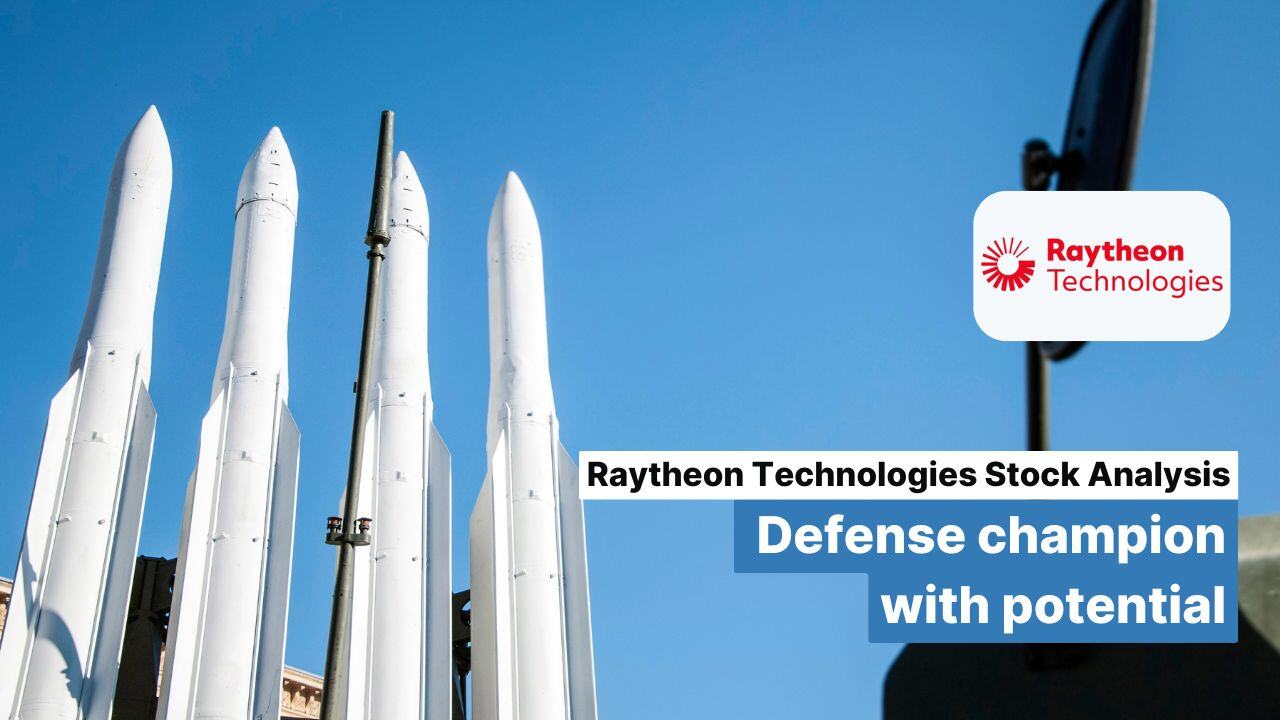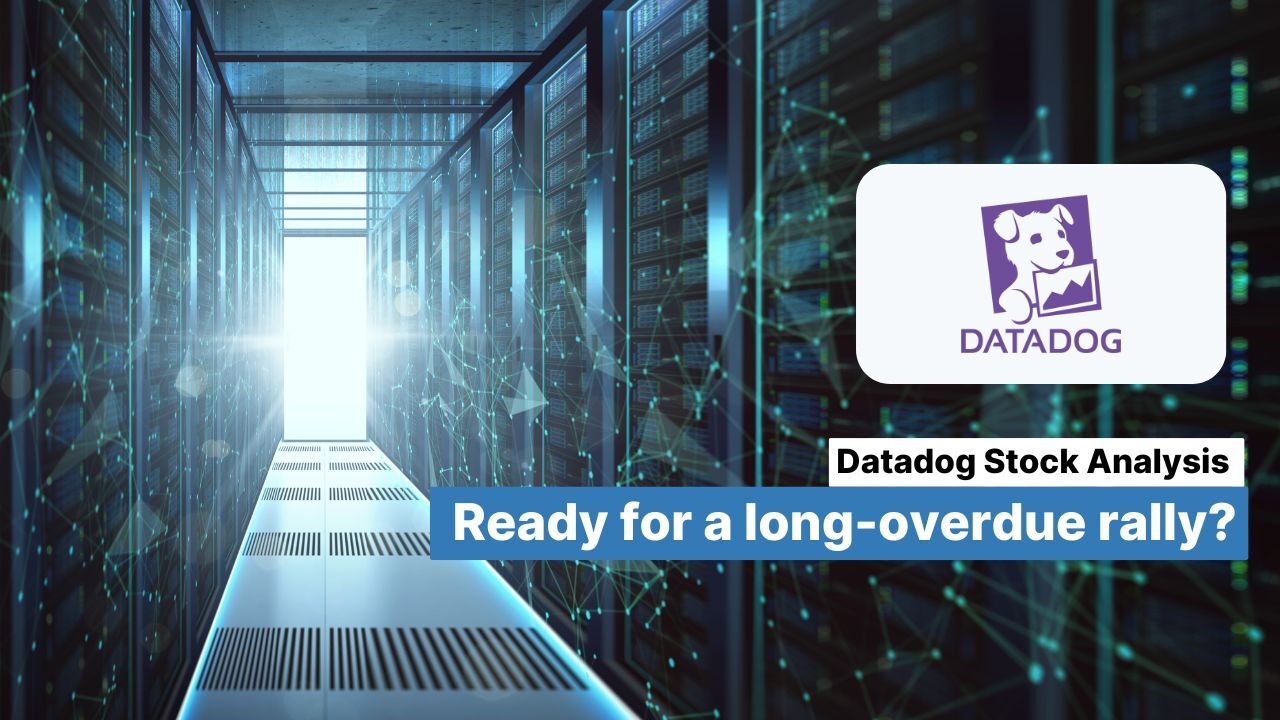Table of Contents
💡Key Takeaways
- Palantir is the winner of the hype surrounding AI and big data stocks
- A new AIP platform is driving Palantir to new highs
- Revenue growth is accelerating to 30% currently
- Palantir is valued at 50x EV/Sales
"It will be years before the company [Palantir Technologies (Isin: US69608A1088)] grows into acceptable valuation measures based on the profits it has generated - even if the company manages to maintain its high margins and further reduces share-based compensation. By contrast, the downside potential remains high in the event of operational weakness, meaning that Palantir does not offer a good risk-reward ratio at the current valuation level. However, investors should continue to keep an eye on the valuation and performance of Palantir Technologies shares."
This was the conclusion of our first equity analysis of Palantir Technologies in 2021. At the time, Palantir was valued at a very sporty EV/Sales of around 24, which suggested little upside potential for the share price. Indeed, this analysis was followed by a prolonged period of weakness in Palantir's share price. Exactly one year later, the stock hit a low of just over $6.
Source: Palantir share price development
However, anyone who thought that Palantir was experiencing a slow decline was sorely mistaken. Almost two years later, the share price has increased more than tenfold from its low. Even the recent setback in the share price does not change this. In the wake of the hype surrounding artificial intelligence (AI) and big data, investors identified Palantir as one of the big winners. And Palantir knew how to use that. Suddenly, CEO Alex Karp's shareholder letters began to talk about an artificial intelligence-based platform that Palantir had been working on since its founding two decades earlier. Investors believed in the superpowers of the new ‘AIP’ platform and sent Palantir shares to new record highs. Palantir is now valued at well over 50 times EV/Sales – and is one of the absolute favourite stocks of private investors. In addition, Palantir was included in the S&P500 Index on 23 September.
Time to take another look at Palantir shares. What has changed in recent years to make Palantir shares rise so sharply? Is the company really one of the future winners? What do we think of the new platform? And does the current valuation still leave room for a good share price performance? We try to answer all these questions in our update on Palantir shares.
What does Palantir do?
Palantir, founded only in 2003, focused in its early years on software designed to help government institutions fight terrorism. It is only in recent years that Palantir has increasingly shifted its business model to include companies. Palantir is principally known for two different platforms: Palantir Gotham, which was specially created for governments and public institutions, and Palantir Foundry for corporate customers.
Both platforms are designed to help customers integrate and analyse their data. The company's strength lies in creating a real and comprehensive model from countless and unconnected data points in order to be able to use these data points. According to Palantir, it is crucial for its customers that the data can be both monitored and secured, and that access to it is restricted, as it is often sensitive data.
This is particularly the case for governments and intelligence agencies. Palantir cites several situations in which the Gotham platform is used. For example, the US military can digitally monitor potential insurgents or terrorists in crisis areas, who previously had to be monitored manually and individually, which is reflected in significant efficiency gains. In general, Palantir is involved in military coordination and decision-making through its platform.
There are also numerous use cases in companies. For example, Palantir can help to enable coordination across borders when building an Airbus model, thereby realising efficiency gains. At the same time, the company is working with Apollo on a third platform that is designed to be particularly tailored to logistics and infrastructure.
In 2021 and 2023, Palantir also introduced two additional platforms that significantly expand the software's range of applications. However, neither platform works independently. They are integrated into Gotham and Foundry and are designed to ensure that meaningful decisions are made based on the platforms' data analysis. The first platform, Apollo, was introduced in 2021. The Apollo platform is in the cloud and can thus provide new features, updates and security standards centrally. At the same time, Apollo allows users to deploy any software in a secure environment. Apollo can therefore also be seen as a cybersecurity platform.
However, the much bigger innovation followed in 2023. With AIP, Palantir's artificial intelligence platform, a platform was introduced that combines machine learning with language models. These language models, also known as large language models (Chat GPT is probably the best example here), can process information into human-readable language and provide instructions based on it. According to Palantir, the special feature of AIP is that the platform combines publicly available information with private company information. In addition, industry-specific requirements for data use are also to be taken into account. According to CEO Karp, all of this leads to a platform that ensures the applicability of the information obtained through data in the real world. At the same time, Palantir wants to comply with legal, regulatory and moral standards.
In practice, Palantir describes a wide range of possible uses. For example, an intelligence officer could use it to query which units could best be deployed strategically in which region. In a business context, one could ask the AIP, among other things, about the best use of drugs and whether their production could be ramped up.
In his announcement of the AIP, CEO Karp boldly claims that every major organisation in the world will need such a system in the foreseeable future. He considers Gotham and Foundry in its entirety to be among the most important industry-specific databases. And the numbers back up his statements.
👀 Looking for new & exciting stocks?
If you would like to receive weekly investment ideas and free stock analyses selected according to the Levermann, High-Growth Investing or Dividend strategies by email, then you can now subscribe to our free stock guide Insider.
Palantir's latest quarterly figures
Palantir was able to grow its revenues by 30% in the third quarter. Compared to previous quarters, this represents a continuous acceleration in revenue growth. Over the last 6 quarters, revenue growth has gradually increased from 13% to 30%. This can also be seen in the chart below, which measures revenue growth over the last 12 months (TTM):
(Source: StocksGuide)
Growth was driven primarily by customers in the US. Revenues in the enterprise segment rose by around 54% year-on-year. However, the number of customers rose even more sharply – by a full 77% year-on-year. This means that Palantir is spreading its revenues across more and more customers, thus becoming less dependent on individual customers. Palantir is also generating more and more revenue from the US government, which is up 40% year-on-year. In Europe, however, CEO Karp has been criticised for his reluctance to invest in artificial intelligence.
Palantir also announced a number of updates during the quarter. For example, it is a crucial partner for Ukraine and has been able to conclude a number of new contracts. Overall, Palantir was able to acquire 104 new customers with over $1 million in revenue in the past quarter. These include major customers such as Maven Smart Systems AI/ML, whose contract volume could increase to up to $100 million over 5 years. In addition, Palantir's software, called ‘Visual Navigation,’ is now also being used in autonomous drone missions.
Palantir is not only growing strongly in terms of revenue, but is also becoming increasingly profitable. While the gross margin has stagnated at around 81% for several quarters, the EBIT margin is continuously rising. In the past quarter, it reached a new high of 16% and was significantly higher than in the previous year. The quarterly figures read as follows:
(Source: Palantir income statement)
The increased revenue growth and higher operating margins are also reflected in higher cash flows. As a result, the Rule-of-40 score is well above the 40% mark again. It is currently just over 60%:
(Source: Rule of 40 Chart Palantir)
So everything is fine? Not quite. There is a flaw in Palantir's figures too – the increasing number of outstanding shares. In year-on-year terms, these rose by around 4% in the third quarter. That's not an extraordinary amount – but it is a small fly in the ointment of the otherwise outstanding figures. The number of outstanding Palantir shares has been rising steadily in recent years, also favoured by share-based compensation:
(Source: StocksGuide)
The company's balance sheet, on the other hand, is still squeaky clean. Palantir continues to have a high cash balance that would easily be enough to cover the company's liabilities. At the current interest rate level, this has the pleasant side effect that Palantir is already earning well from its cash cushion alone. For this reason, net profit is also significantly higher than EBIT, as can be seen in the income statement above. In addition, Palantir has hardly any intangible assets. This suggests that Palantir has not made any overpriced acquisitions in recent years. The balance sheet as of 30 September 2024 is as follows:
(Source: StocksGuide)
Who runs Palantir Technologies?
The company Palantir is increasingly associated with the person Alex Karp. Karp founded Palantir in 2003 together with Peter Thiel, after both had already successfully invested in start-ups and become billionaires. Since then, Karp has been working for Palantir. Karp, who also obtained a doctorate in philosophy from the University of Frankfurt in Germany, is considered one of the most colourful and influential CEOs in America. For example, he sends Palantir's employees Christmas greetings from skiing, which he reportedly does for five hours a day. Among other things, his offensive political statements, his support for Israel and Palantir's long-dubious reputation for its close ties to the US military have earned him a mixed reputation. Karp is also open about the fact that he is not a fan of Donald Trump. This has also led to some disagreements with co-founder Peter Thiel – an ardent supporter of Trump. The fact that too much dependence on an eccentric CEO can also cause problems is regularly demonstrated by Tesla boss Elon Musk, among others. However, it is also a fact that Alex Karp has been running Palantir extremely successfully for 20 years.
Valuation of Palantir Technologies
Due to its strong share price increase in recent years, Palantir has now reached a breathtaking valuation. The EV/Sales ratio is over 50. If you look at the ratio of enterprise value to free cash flow, it is 150. The price-earnings ratio is even 340 – these are figures that are very unusual for companies and express very high expectations for the future. This is also reflected in Palantir's own historical valuation:
(Source: StocksGuide)
Palantir is thus valued higher than ever before on the basis of both revenues and free cash flow. This makes Palantir extremely vulnerable to a stronger setback. Hardly any other company in the AI sector is currently valued as highly as Palantir. Even the mother of all AI companies, Nvidia, is valued more favourably with an EV/Sales of just under 30 and an EV/Free Cash Flow of 60.
Conclusion on Palantir Technologies
The Palantir company definitely has a promising business model with high margins and prominent major customers from business and politics. It is this mix that makes the company so interesting and attractive, as weaknesses in one of the two customer segments can be offset by the other.
The model of a large, integrated platform that can be used for many processes makes it extremely difficult for existing customers to switch to competitors. The high cash reserves also enable the company to continue investing and, if necessary, to buy in external expertise in order to maintain its competitive advantage. At the same time, the new customers acquired in the US demonstrate the (supposed) competitive advantage that Palantir currently enjoys. At this point, however, it must be mentioned that Palantir (could) remain closed to markets such as China or India simply because of its business model, which is interwoven with the US military. CEO Karp usually explicitly speaks of the US and its European allies.
However, the big problem is the astronomically high valuation of the company. In our first analysis, we spoke of an ‘ambitious’ valuation. At the time, however, Palantir was valued at less than half as much with an EV/Sales of 24, with roughly the same revenue growth. The current price leaves little room for manoeuvre - but if the AI hype should subside, Palantir has significant downside potential. At the current level, Palantir does not offer a good risk/reward ratio.
On average, analysts are also issuing a price target almost 30% below the current price.
It is advisable to set an EV/Sales at 20, for example, or an EV/FCF alert at 40, and then take another look at the stock and add it to your watchlist if necessary.
🔔 Disclaimer
The author and/or persons or companies associated with the stock market guide own or may own shares in Palantir. This article represents an expression of opinion and not investment advice. Please note: We do not provide investment advice and we do not make recommendations.
All information is provided without guarantee. Past performance is not an indicator of future performance. Please note the legal information.




